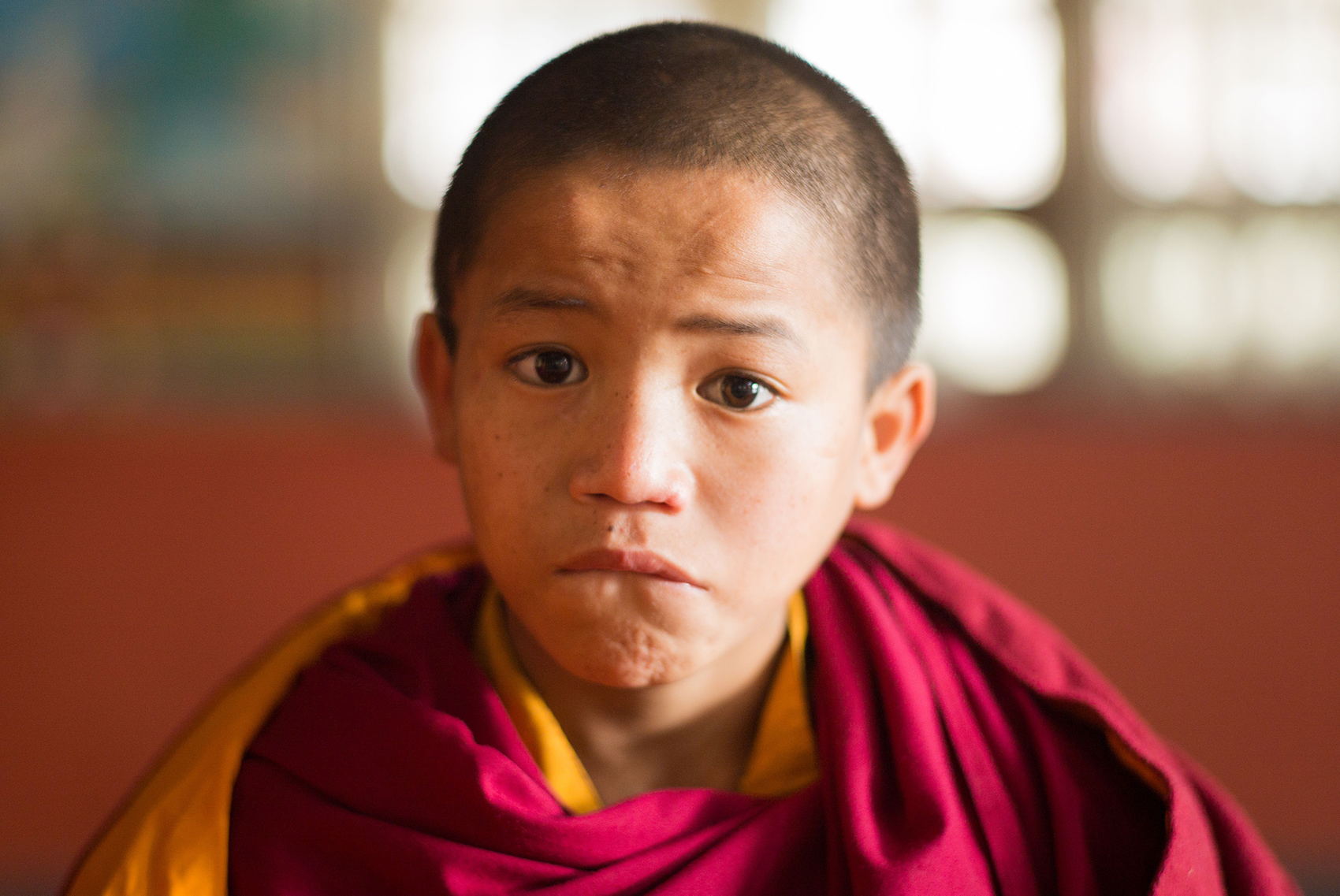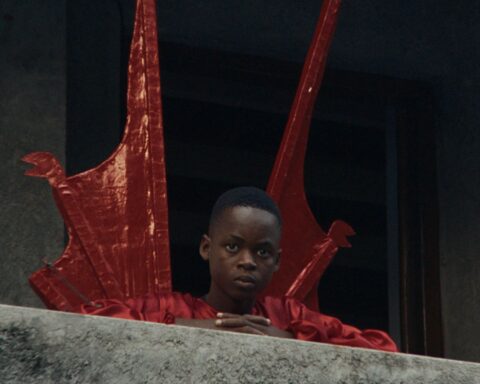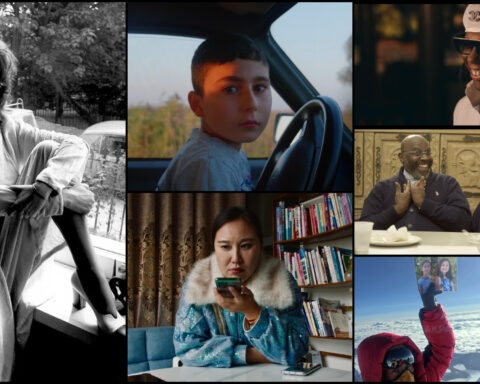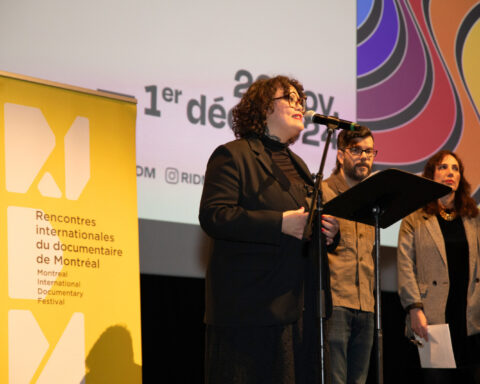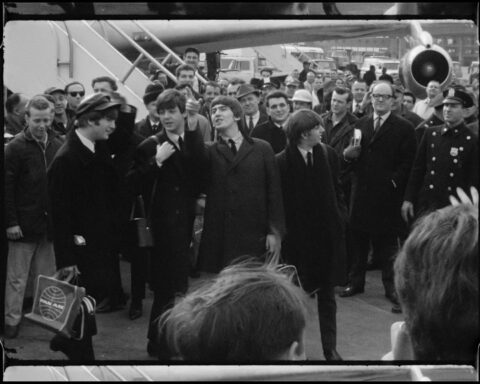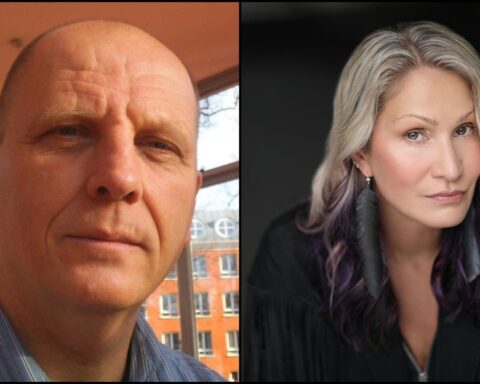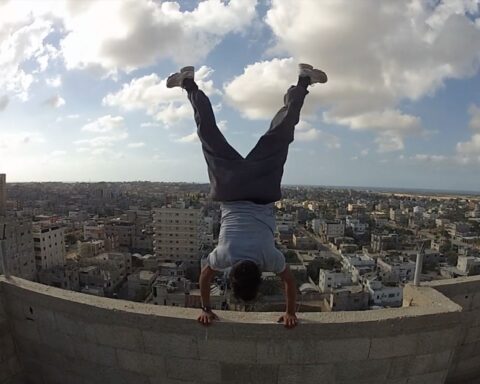“You can’t find happines somewhere else. I am just gonna stay here and have fun.” Those are the opening words in Yuqi Kang’s remarkable first feature film A Little Wisdom. They’re spoken by Hopakuli, a four-year-old boy who has been placed in a Buddhist monastery in Lumbini, Nepal by his mother. Chorten, Hopakuli’s older brother, is already at the Karma Samtenling Monastery, and we eventually find out that their father is dead. So, one might imagine Kang’s doc as a sentimental tale of a couple of unhappy kids who find some peace and tranquility among Buddhist monks—but that would be a mistake.
Kang has made a film that’s rich in its appreciation of the vagaries of life—and sadness is only one of many emotions evoked in A Little Wisdom. Chorten and Hopakuli are a couple of kids—crazy boys—and they play with each other and the other young monks in an atmosphere of savage innocence. It’s a measure of Kang’s success as a director that Hopakuli, Chorten and an older boy, Vija, accept her into their lives and open up completely to her and the inevitable documentary camera. We see the brothers fighting and swearing at each other, and their punches and kicks are quite real. But we also see them cuddling in bed together and telling stories—mostly by Hopakuli—some awful and others quite wonderful. By contrast, Vija comes across as a sweet kid: a mentor especially to Hopakuli but not nearly as complex a character as the brothers.
“The relationship between Chorten and Hopakuli is raw and vivid,” agrees Kang in an email interview with POV. “Hopakuli came to the monastery when he was around two or three years old, and he has no valid memories outside of the monastery of his parents. But he can always manage to tell many different versions of the lives that he has had and what his parents were like. It wasn’t until later on that I leaned from Chorten what had really happened to their father. It became quite clear to me that the structure of the film had to unfold from three angles: the environment of Nepal, the lives of the characters and Hopakuli’s fantasies. I wanted the boys’ stories to be captured and depicted in the most intimate way; therefore, the style and tone between the boys is much different from the rest of the film.”
Kang has made a truly stylish film, and the tone is, as she intended, noticeably distinct when she follows the roguish Hopakuli as he wanders fields, yells at an attacking monkey or plays with Chorten and Vija. Music disappears, the camera comes closer and suddenly the audience is immersed in a verité doc, complete with diegetic sound. The approach works well, as it personalizes the scenes with the boys, giving the film a thrust in terms of character development and narrative arc. Hopakuli’s dreams are necessarily subjective, with shots of nature and abstract images accompanying his often-quirky tales.
It’s the third part of the film, on Buddhism and the nature of Nepal, that brings out a bolder, bravura approach from Kang. She opens the film with a stunning scene in deepest darkness with the monks, from the oldest to young Hopakuli, gathering to light candles. As they walk in order, chanting prayers and holding candles aloft, the orange colour of their robes marks a stark contrast to the immense black of the night.
In her press kit, Kang writes: “I crafted moments with natural elements such as the Sun, the Moon and the monkey, and other wildlife from the area. They each represent different ideas in Buddhism. I believe nature always can trigger a genuine emotion among all of us.” POV followed up, asking her to elaborate on her Buddhist perspective and how it impacts the film. She replied, “A great monk once told me that Buddha’s wisdom is all around us and that nature is the greatest of Buddha’s teaching. In the film, I tried to parallel the moon phases with the lives of the boys. I also tried to incorporate Buddhist meditation elements into the soundscape. The first sound of the meditation bell to me indicates that the journey has begun.”
Lumbini, Nepal is the birthplace of the Buddha. In the glorious setting of mountains, snow and trees, the monasteries—so rich in colour and minimal in architectural style—stand out as incomparably beautiful and peaceful. If you can’t be meditative here, where can you be?
In response to Lumbini and her own love of Buddhism, Kang’s final comment resonates profoundly: “Making this film, personally, was a lesson for myself to always have an open heart to people and lives.” That’s more than a little wisdom.
A Little Wisdom screens:
-Sat, Apr. 28 at 3:00 PM at TIFF Lightbox
-Mon, Apr. 30 at 5:45 PM at TIFF Lightbox
-Sat, May 5 at 1:00 PM at the Revue
Hot Docs runs April 26 to May 6. Please visit hotdocs.ca for more info.
Visit the POV Hot Docs Hub for more coverage from this year’s festival!
A Little Wisdom – Trailer from YUQI KANG on Vimeo.




